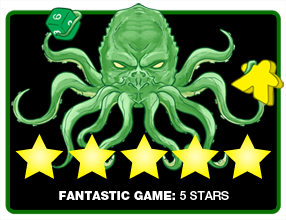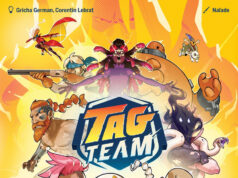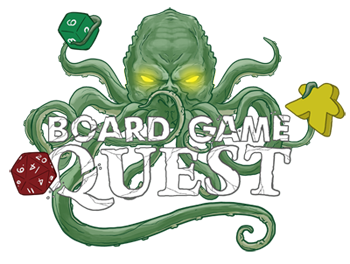 Drink in hand, you are chatting around a table with a group of friends. A hush comes over the group, and Rachel and Kelsey are the last to stop talking as they finally realize the game is about to start. There has been a murder. Chris silently marks clues, providing information to the group on the details of the murder. As you eye each other to see who looks suspicious and which evidence and weapons in front of each person are most likely.
Drink in hand, you are chatting around a table with a group of friends. A hush comes over the group, and Rachel and Kelsey are the last to stop talking as they finally realize the game is about to start. There has been a murder. Chris silently marks clues, providing information to the group on the details of the murder. As you eye each other to see who looks suspicious and which evidence and weapons in front of each person are most likely.
You see Angela, a notorious bad liar, is quiet and not making eye contact. She looks suspicious. You throw your police badge on the line. A quick move, but you don’t want to waste time. “Angela, I think YOU were the murderer, jealous of your friend at school getting perfect grades, using a pill as a weapon, and you left the evidence of an envelope behind that you used to transport the pill!” Angela raises an eyebrow and Chris shakes his head no, nonverbally signifying, “you’re wrong.” Vinny, Miranda, and Ana all shout in surprise, accusing each other next based on the evidence and weapon cards in front of each of them. Shoot!
You should have reconsidered the evidence; perhaps it was a sandwich rather than an envelope. Maybe you can convince Zara to guess that next. While you lost your badge (and your only guess), it’ll only be 15 minutes until you reset, and a new murderer is picked. Perhaps it will be you next!
Gameplay Overview:
There’s been a murder. One of the investigators around the table did it. You draw your roles in secret to see whether it was you or not. You need to deduce not only who did it, but what weapon they used and what evidence they left behind. Everyone has 4 pieces of evidence and 4 different murder weapon cards in front of them. The murderer selects one piece of evidence and one weapon before everyone opens their eyes to start the game. The forensic scientist knows what happened, but they must remain silent at all times and rely on a limited table of clues to help the investigators solve the case.
You’ll only have one guess (your badge) to get all 3 pieces right, and if you guess wrong, you lose your badge and cannot formally accuse again. Then it is up to the remaining investigators to guess it right. When you have enough people, one person will also be the accomplice trying to throw suspicion off the murderer, and one person will be the witness, who knows which two players are guilty, but not who the murderer is or how the crime was committed.
If all the investigators guess wrong, then the murderer slips away and wins. If the murderer is caught with the right weapon and evidence, they lose, unless there is a witness in play, then the murderer has one last chance to guess who the witness is and “take care of them” so they can’t testify.

Game Experience:
My favorite replayable murder mystery game! My favorite hidden role game! One of my favorite deduction games! Actually, one of my favorite games, period! This game has similar elements to Clue, Secret Hilter, Mafia, and Werewolf—but this is way better in my very objective opinion. 🙂

Unlike other hidden role games where you just accuse people because they “look suspicious,” in Deception, you actually have cards in front of everyone to discuss what matches the clues from the narrator best. Since people have to guess not only who did it, but with what and what they left behind, there is a lot more for the murderer to use to pin on others, or for savvy investigators to latch on to, so the game does not solely rely on social deduction and lying. It’s based on deduction, too!
Additionally, this game is more fun for the narrator role, because unlike in classic Mafia, the narrator in this game (called the forensic scientist) is actively helping the investigators. The forensic scientist can’t talk, but they help the investigators by selecting clues on category cards such as “how did they die” to help steer the investigation to the right person and the right evidence… I also love that it’s around 15 minutes and tells a story in that time (we like to make up extra details of what happened). This usually means you can play enough rounds that everyone gets to play the murderer and the forensic scientist.

I have played this at player counts of 4, 5, 6, 8, and 10 with many different groups and loved every game I’ve played. It definitely shines at 6 or more, as it’s really fun to have both the accomplice and witness as part of the game. While we haven’t played at the max of 12 players, I think it would be difficult to keep everyone’s attention with that many players.
While not as good at 4 players, it is such a fast game that it can be a nice introduction for people who are new to board games, allowing them to try the different roles in the game, and then to be enthusiastic to play with a bigger group. Murder mystery is a nice hook for many folks.
The text on the evidence/weapon cards at times is poorly translated, making for some funny captions below the picture. We find this more entertaining than distracting, especially when not taking the story too seriously.
Final Thoughts:
Chef’s kiss of approval! I don’t think I could improve Deception: Murder in Hong Kong in any way. What a fantastic, well-designed murder mystery deduction, hidden role game. It adds so much to have the cards of weapons and evidence to discuss, especially for bad liars in a hidden role game, and allows deductions with clues given by the narrator rather than just yelling- “you look suspicious!”
As it plays in a beautifully brief 15 minutes, it’s really nice for a group where people can come in and out, dropping in for a round or two, often ending the game with a roar of realization- “I knew it was you!”. Then, usually, people are hooked and want a turn to play as the narrator. Or better yet, play enough rounds to get a chance to be the murderer.
Final Score: 5 Stars – A super fun, hidden role game best for 6–10 players, that’s surprisingly meaty for its 15-minute playtime.
 Hits
Hits
• Hugely replayable
• Quick 15 minute game, easy to play multiple rounds in an evening
• Best hidden role game for people bad at lying or social deduction
• The narrator of the game is fully involved as a player
Misses
• You can play at 4-5, but it is best with 6-10
• This is a game about murder, so not appropriate for all ages and groups






















I think Cluedo want a word
I really like Clue as well for the deduction element. What I like even more about Deception is that it combines the deduction of clue with a hidden role game like mafia. To me it’s even more fun not just that there was a murder, but that one of your friends did it and is trying to caste suspicion on others. Have you tried Deception? What did you think?
This one fell hard for my group, but I think I need to try it again.
I’ve played this with a lot of different groups and had fun each time- I think it’s worth another try! I do think though that hidden role games can be stressful for some, even when you have more to talk about with this game then something like Secret Hitler. What do you think didn’t resonate with your group with the game and how many people did you play with? If you do try it again, let me know how it goes!